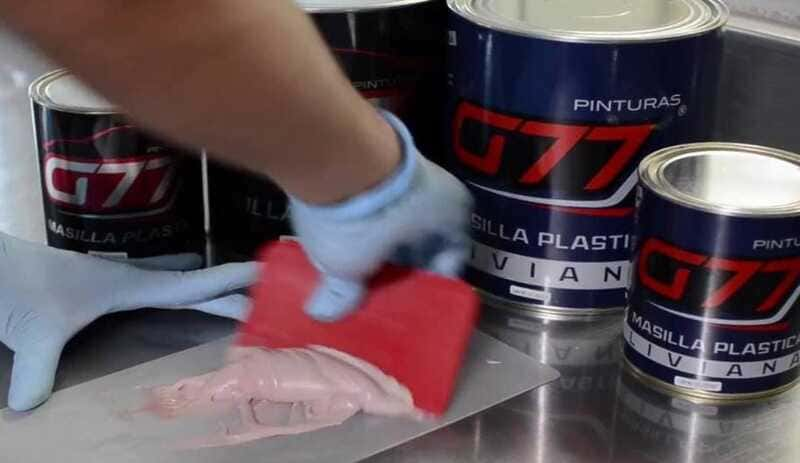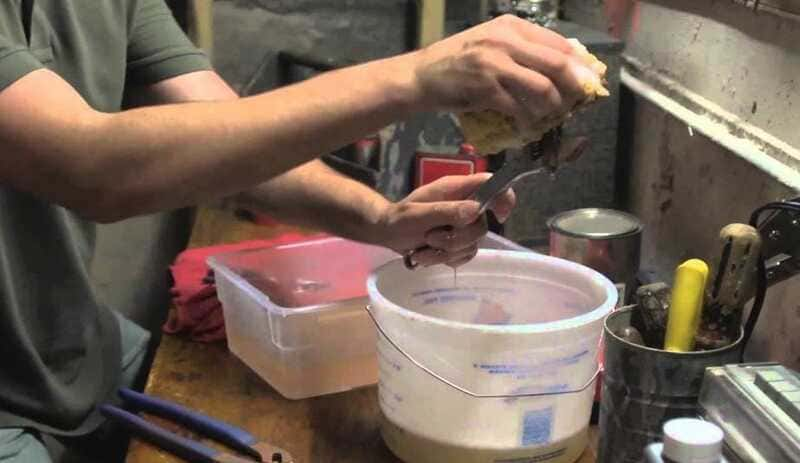Silicone caulk is a commonly used material in DIY projects and home repairs because of its versatility and durability. It is used to seal cracks, joints and edges, and can adhere to a wide variety of surfaces, such as glass, plastic and metal. However, applying silicone caulk can be challenging, and results may not be uniform if not done properly.
It is common for silicone caulk to stick to the tools used to apply it, which can make it difficult to create smooth, even edges. In addition, air bubbles may be trapped under the putty, which can affect the final appearance.
To solve these problems, there is an effective method for smoothing silicone caulk: using Windex. Yes, you read that right. Windex, the popular glass cleaner, can help smooth silicone putty and leave it with an even, professional finish.
In this article, we’ll explore how to smooth silicone putty with Windex, and provide helpful tips to make your next DIY or home repair project a success.
Common problems associated with silicone caulk application.
Applying silicone caulk can be a challenge, even for the most experienced DIYers. One of the most common problems is excess material, which can result in an unattractive and unprofessional finish. In addition, uneven and ragged edges are also a common problem when working with silicone putty.
For smoothing silicone putty, there are different methods and tools available on the market, but not all are equally effective. That is why it is important to know how to smooth silicone putty with Windex, a simple but effective solution.
Silicone putty can be difficult to handle and it can be hard to create a smooth, even edge, but by using Windex you can achieve a professional finish. The solution cleans the putty and smooths its surface to create clean, even edges. In addition, Windex is easy to use and very economical, making it an excellent choice for any DIY or home repair project.
What is Windex and how does it work to smooth silicone caulk?
Windex is a popular glass cleaner that has proven to be very useful in the application of silicone caulk. Although it is not a product designed specifically for smoothing putty, it has proven to be an effective solution for smoothing the putty surface and creating even, clean edges.
The way Windex works to smooth silicone putty is very simple. The product contains a combination of water, alcohol and ammonia, which act as cleaning and smoothing agents. When applied to silicone putty, the solution cleans and smoothest the surface of the putty, removing any excess material and creating even, smooth edges.

For the process of how to smooth silicone putty with Windex, simply apply a small amount of the product to the surface of the putty and use a finger or tool to smooth it. The Windex will help to smooth the surface of the putty, which will make the smoothing process easier. It is important to note that Windex does not stick to the silicone putty, so it will not stick to the tool used to smooth it.
The benefits of using Windex instead of other silicone putty smoothing solutions.
When working with silicone caulk, it is important to choose the right solution for smoothing it. Although there are several options available, such as soap and water, Windex has proven to be one of the most effective solutions for smoothing silicone putty.
One of the main advantages of using Windex over other solutions is its ability to smooth the putty surface. While soap and water can be helpful in cleaning the putty surface, they do not have the same ability to smooth the putty surface and create even, clean edges. Windex, on the other hand, contains a combination of water, alcohol and ammonia that acts as a cleaning and softening agent, making it a much more effective solution.
Another benefit of how to smooth silicone caulk with Windex is its ease of use. It is a very inexpensive product and easy to find in any store, making it a convenient and affordable option. It is also very easy to apply and does not require specialized skills or expensive tools to apply. Anyone can use it with ease and obtain professional results.
The steps necessary to prepare the surface and apply the silicone putty before smoothing it with Windex.
Before you start smoothing silicone putty with Windex, it is important to follow a few steps to properly prepare the surface and apply the putty.
First, make sure the surface is clean and free of dust and grease. If the surface is not clean, the caulk will not adhere properly and may have adhesion problems in the future. You can clean the surface with an all-purpose cleaner or isopropyl alcohol before applying the putty.
Once the surface is clean, you should prepare the silicone caulk. Be sure to read the manufacturer’s instructions for the correct proportions of catalyst and putty. Mix the putty and catalyst in a clean, dry container until well blended. Use a spatula to mix the putty and catalyst.

Next, apply the silicone putty to the surface. Use a putty knife to apply the putty evenly, making sure to completely cover the area to be repaired. It is important to work quickly, as the putty will begin to harden in a few minutes.
Once you’ve applied the putty, it’s time to smooth it out with Windex. Spray Windex over the surface of the putty and use a putty knife or smoothing tool to smooth the surface and create even, clean edges. It is important to work consistently and evenly for best results.
How to use Windex to smooth silicone caulk effectively?
Smoothing silicone putty with Windex can be an effective technique for achieving a smooth, even surface. Below are some helpful application techniques and tools to achieve optimal results.
First, it is important to apply an adequate amount of Windex to the putty surface. It is not necessary to soak the surface, but make sure there is enough to wet the entire area to be smoothed. Use a spray bottle to spray the Windex evenly over the putty.
Once you have applied the Windex, use a smoothing tool to smooth the surface of the putty. There are different tools you can use, such as a putty knife, a plastic spoon or a specialized putty smoothing tool. It is important to choose the right tool depending on the type of work you are doing.
When using the smoothing tool, be sure to work evenly and consistently, applying the same amount of pressure over the entire surface of the putty. You can also use a “pinch” technique, in which you use your fingers to pinch and smooth the putty. This technique can be especially effective on small or detailed surfaces.
In addition, it is important to consider temperature and humidity when applying Windex to smooth silicone putty. If it is too hot or too cold, the putty may not adhere properly and will not smooth evenly. Try to work in a temperature controlled environment with moderate humidity.
How to clean the tools and surface after applying and smoothing silicone caulk with Windex.
After applying and smoothing silicone caulk with Windex, it is important to properly clean the tools and surface to ensure a clean, professional finish.
First, you should clean the tools you used to apply and smooth the silicone caulk. You can do this quickly with a damp cloth or sponge. If the silicone putty has dried on the tools, you can soak them in a soap and water solution for a few minutes before wiping them with a cloth.

After cleaning the tools, you must clean the surface where you applied the silicone putty. Use a damp cloth or sponge with a little mild soap to wipe off any excess putty or stains. If the surface is glass or metal, you can use Windex to clean it.
It is important to make sure the surface is completely clean and dry before applying paint or any other finish. Otherwise, the finish may not adhere properly to the surface.
Finally, it is important to properly dispose of any leftover silicone caulk. Be sure to close the tube or bottle of caulk tightly to prevent it from drying or hardening. If you have leftover caulk that you are not going to use, you can dispose of it according to the manufacturer’s recommendations.
Frequently asked questions about using Windex to smooth silicone caulk.
If you are considering using Windex to smooth silicone caulk, you may have some questions about its effectiveness and application. Below, we’ll answer some frequently asked questions to help you make an informed decision.
Is Windex effective for smoothing silicone caulk on different types of projects and surfaces?
Yes, Windex is an effective solution for smoothing silicone caulk on a variety of projects and surfaces, including windows, bathtubs, tile, and more. It is especially useful for projects that require a smooth, even finish, such as DIY projects and home repairs.
How should I apply Windex for smoothing silicone caulk?
To apply Windex to smooth silicone caulk, you should spray a small amount of Windex onto the freshly applied caulk and then smooth it with a suitable tool. It is important to work quickly to smooth the putty before it dries. If the putty has dried, you can spray a little more Windex to smooth it out before smoothing.
Is there any type of silicone putty that cannot be smoothed with Windex?
No, Windex is an effective solution for smoothing most types of silicone caulks, including high temperature and weather resistant silicone caulks. However, it is important to read the putty manufacturer’s recommendations to ensure that it is compatible with the use of Windex.
Can I use other products instead of Windex to smooth the silicone caulk?
Yes, there are other products you can use to smooth silicone caulk, such as water and mild soap. However, Windex has proven to be an effective solution for smoothing silicone putty and can save time and effort compared to other products.
Conclusions and recommendations for users who wish to use Windex to smooth silicone putty.
In conclusion, using Windex to smooth silicone putty can be an effective alternative to other solutions such as soap and water. By following the proper steps to prepare the surface, apply the putty evenly and use effective smoothing techniques, a professional, high quality result can be achieved.
It is important to remember that, while Windex can be a useful tool for smoothing silicone caulk, it is not a magic bullet and still requires good prep work and application. It is also essential to follow safety instructions when using the product and to be sure to properly clean the tools and surface after use.
Overall, by carefully following the necessary steps and using Windex with caution, a smooth and professional finish can be achieved in silicone caulk on a variety of DIY and home repair projects. We recommend always reading the manufacturer’s instructions and taking into account the specifics of each project to achieve the best results.
